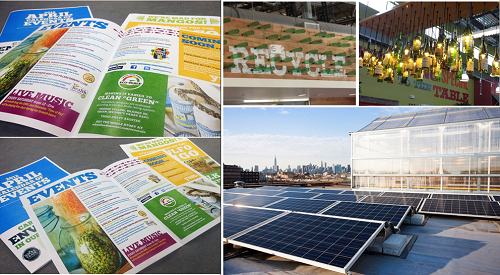By: Laurie Gethin, Director of Education, Food Marketing Institute

Last week at the FMI Energy & Store Development Conference (ESD) there was a clear theme that permeated many of the presentations: sustainability. Consumers are becoming increasingly more focused on sustainability. And grocery stores are listening and responding. Throughout the conference, speakers discussed ways to incorporate sustainable practices into energy, refrigeration and store design. Topics included the generation of HFO refrigerants, recommendations for 50 percent energy reduction, store designs that reduce overall utility consumption, and much more.
So you’re doing all this wonderful sustainability work, but are your stakeholders even aware? Aaron Daly, Global Energy Coordinator from Whole Foods Market, and Holly Carr from the U.S. Department of Energy’s Better Buildings Partnerships joined together at ESD 2015 and provided four suggestions to help drive awareness of your sustainability work:
- Educate Employees – Use your internal store communications to discuss and promote your sustainability efforts. Hold trainings so staff can become knowledgeable and empowered about your sustainability programs.
- Engage Customers - Promote your efforts in store design and displays. Tie your sustainability objectives into each store’s local or community objectives. For example, you could incorporate a natural material found in the community into your store design.
- Incorporate the Media – Utilize both internal social media platforms as well as partnerships with local media outlets to promote your efforts.
- Leverage Partnerships – Partners can act as key amplifiers of your store’s messages. One such example of a successful partnership is Whole Foods Market’s participation in the U.S. Department of Energy’s Better Buildings Initiative. This program kicked off in 2011 with the goal of making buildings 20 percent more energy efficient over the next 10 years. Participating companies set a public goal of at least 20 percent energy savings and work together to share best practices for reducing energy use in their stores.
See photos from the conference on FMI’s Flicker page and learn more at on Energy and Store Development Conference webpage.


 Industry Topics address your specific area of expertise with resources, reports, events and more.
Industry Topics address your specific area of expertise with resources, reports, events and more.
 Our Research covers consumer behavior and retail operation benchmarks so you can make informed business decisions.
Our Research covers consumer behavior and retail operation benchmarks so you can make informed business decisions.
 Events and Education including online and in-person help you advance your food retail career.
Events and Education including online and in-person help you advance your food retail career.
 Food Safety training, resources and guidance that help you create a company food safety culture.
Food Safety training, resources and guidance that help you create a company food safety culture.
 Government Affairs work — federal and state — on the latest food industry policy, regulatory and legislative issues.
Government Affairs work — federal and state — on the latest food industry policy, regulatory and legislative issues.
 Get Involved. From industry awards to newsletters and committees, these resources help you take advantage of your membership.
Get Involved. From industry awards to newsletters and committees, these resources help you take advantage of your membership.
 Best practices, guidance documents, infographics, signage and more for the food industry on the COVID-19 pandemic.
Best practices, guidance documents, infographics, signage and more for the food industry on the COVID-19 pandemic.
